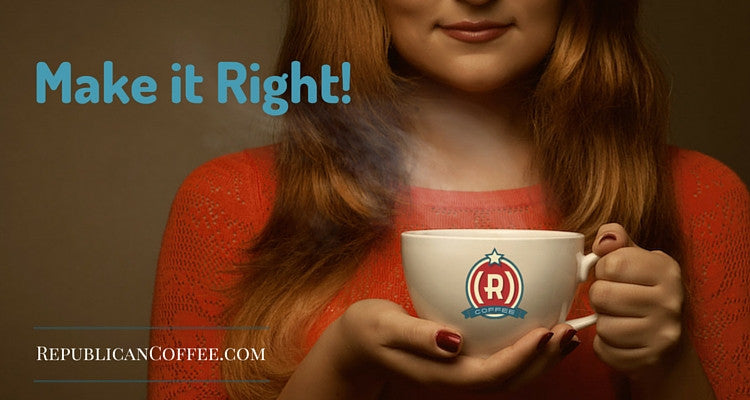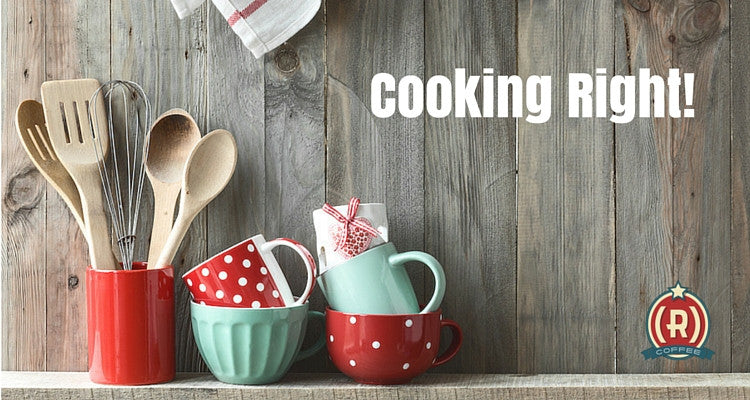Unless you are a barista, currently work in a coffeehouse, or have coffee equipment that costs half as much as your car, chances are your home coffee may not taste as good as your morning cup at the shop. But take hope! There are ways to brew an incredible cup of coffee without breaking the bank. If you want to enjoy coffee on your own without having to hit up Dunkin' Donuts or Starbucks every time you need a jolt, here is some science behind brewing that perfect cup and tips to try at home.
The Right Beans
Start with fresh-roasted, whole beans. If you’re getting coffee from us, and really, you should be, since we offer incredible freshly-roasted, organic, fair-trade certified beans from small-batch farmers, you’re already well on your way to having a great coffee experience. Coffee shops have access to fresh beans, and with good reason. If they started with stale beans or already-ground beans, the final product would also taste stale. The science behind this? Freshly-roasted beans, within minutes of roasting, begin extracting oils, the richest flavor of coffee from the beans. Beans that sit on the shelf for awhile have lost a lot of these oils, and if they’ve been stored improperly (we’ll get to that in a minute), they've oxidized and lost further flavor. Get fresh, whole beans to start your experience off with.
Store Your Beans the Right Way
Location, location, location! Where you store your beans is a big deal. Light and moisture are your precious coffee beans’ two big enemies. Put your coffee in an airtight and opaque container, glass if possible. The science behind this? Direct sunlight makes coffee beans go stale, as does moisture, and glass is better than plastic because with the coffee bean oils, you don’t want plastic to break down at the molecular level and leach into the coffee, for both health and taste reasons. While we’re on the subject, don’t store your beans in the freezer. It’s an old wives’ tale that it keeps beans fresh; in fact, it can give your beans freezer burn and also ruin the taste of your coffee. The freezer is offensive to good coffee. Stick to the opaque, airtight, glass container and you’ll be golden.
Grind it Right
Grind appropriately. One grinder size does not fit all; for espressos, you’ll want a finer-ground coffee, and for traditional coffeemakers and French press, medium-coarsely ground is what you want. Invest a little in a grinder that adjusts coarseness (they’re $40-$50 at Lowe’s and comparable storefronts), and it will take the guesswork out for you! The science behind this? Finding the right grinder and grinding coffee beans at the right size will extract the appropriate amount of flavor from the beans based on how you grind them, and give the desired effect as you make your coffee with your preferred method. Of course, you may be using pre-ground coffee. While ground coffee doesn't have the same zing as whole bean, Republican Coffee is so fresh that you are going to have a stellar cup of coffee anyway!
Cold Water is Right
Use cold, filtered water. Don’t ruin your perfect, heavenly smelling beans with tap water that’s full of chlorine and other chemicals. Do yourself a HUGE favor and use cold, filtered or distilled water. Why cold water, you may ask? Conventional coffeemakers are programmed internally to receive cold water and heat it up to the optimal 197.6-204.8 degrees F. If you put in water that’s not cold, the warmer temperatures may cause over-extraction on the coffee beans, and nobody likes a burned cup of coffee!
The Right Filter Makes Everything Better
Use a reusable, mesh metal coffee filter if your machine requires one. Not only is this an environmentally friendly and cost-effective way to filter your coffee, but if you prefer the richer taste of coffee, the metal filter will allow the visible oils of coffee and even a little bit of sediment through the filter and into your cup, producing the bold cup you desire. It is a little bit of a hassle to clean out versus paper filters, but the benefits of a better-tasting cup trump clean-up, right?
Serve Hot Coffee Right Away
Serve immediately. This one is pretty much a no-brainer, but for the best tasting coffee, serve your fresh brew immediately. As soon as the coffee is brewed, it begins losing flavor as light, oxygen and humidity take its toll. Even worse, if it’s in a conventional coffeemaker with the warming station underneath the coffee pot, your liquid black gold begins burning and caramelizing the instant it hits the coffee pot. Have you ever smelled a pot of coffee that’s been on the burner too long? The most delicious of drinks can almost instantly become a horrendous smell if it’s allowed to burn.
Reuse your grounds, but NOT for drinking. If you’re a financially conscientious person, maybe you’ve tried reusing your coffee to brew another pot. May we suggest finding another way to cut costs if you enjoy a really good cup of coffee? It’s almost as bad as drinking tea and passing it off as coffee. The flavor, oils and goodness are already gone from the grounds, so reuse them as garden fertilizer, a body scrub or another one of the numerous ways we suggest in our ebook (link up), and start with fresh beans every time.
Now that you’re better equipped to make a perfect cup at home, let us know how it goes! Good luck, fellow American coffee drinkers!




